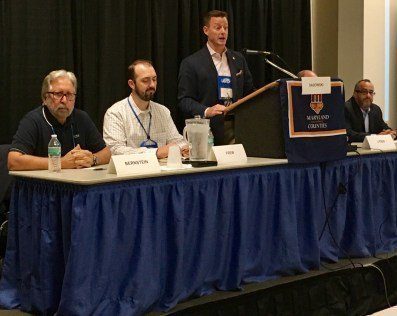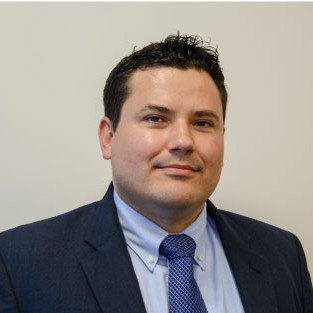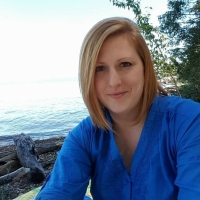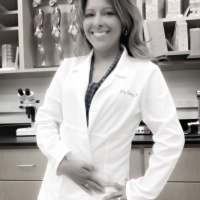
Revisiting – How Can Maryland Net a Boom in Biotechnology?
January 9, 2019
This is what you said in 2017… Have your answers changed?
The below discussion was originally posted on BioBuzz’s online community on August 15, 2017. This particular question received a number of very thoughtful responses from across the state and it turned out to be one of the most viewed articles of the year on BioBuzz.
As the new year begins, and on the heels of a banner year for the Maryland Biotech industry, I thought it would be good to resurface this question again and reflect back on those answers from 18 months ago.
Have we moved the needle and made the progress in the areas that were identified below? There
But have we made the changes we need to ‘Net a BOOM in Biotech’ again in 2019 and beyond?
Have any of your answers changed?
How would you answer the same questions today?
Original Post from August 15, 2017
At MACo’s Tech Expo the Maryland Tech
Tom Sadowski Vice Chancellor for Economic Development, University System of Maryland asked these three questions of his expert panel, which included:
- Henry Bernstein – Vice President, Scheer Partners
- Chris Frew – CEO, Workforce Genetics, LLC
- Julie Garner – Senior Director, Government Affairs, AstraZeneca
Medimmune - Brian Gaines – CEO, MdBio Foundation
BUT I WANT TO KNOW WHAT YOU ALL THINK!
So here are your questions….
1. What are the top three gotta-haves in making Maryland a bigger player in biotech industry?
2. What obstacles stand in the way of growing the biotech industry in Maryland? (Laws? Regulations? Economics? Employment?)
3. What does your organization bring the the table for the growth of Maryland’s biotech industry?
Here’s what you had to say.

Tammi Thomas
1. Three ‘gotta-haves’ in making Maryland a bigger player in the biotech industry are: 1) more venture capital firms to invest and locate in the region; 2) more collaborations between industry, academia, and government; and 3) more early-stage funding for commercialization.
3. TEDCO provides funding from the research stage (Maryland Stem Cell Research Fund and Maryland Innovation Fund) to early-stage capital (Life Science Investment Fund and Gap Fund) to Series A investments (Maryland Venture Fund) as well as entrepreneurial support services (such as the mdPACE program which provides expertise to successfully navigate the medical device commercialization process).

Mark Nardone
What are the top three gotta-haves in making Maryland a bigger player in biotech industry?
Five things (yes I know you asked for three) – 1). Venture capital regionally located 2). Centralized information source – job, intern, training and funding opportunities; 3). C Suite talent; 4). Programs to retain local talent who have completed their education; 5.) Continued inducements from state and local governments to keep existing pharma companies, bring in new companies and well as support startups.
2. What obstacles stand in the way of growing the biotech industry in Maryland? – Laws? Regulations? Economics? Employment?
3. What does your organization bring
Bio-Trac® has expertise in conducting hands-on training workshops for research scientists, focusing on the latest relevant techniques that are necessary for laboratory research. Open to the scientific community, all workshops are

Joe Sanchez
1. Define your niche– we can’t excel at everything and the cultivation of biotherapeutics is a long journey in space and time. Should we leverage the strength of our academic institutions and the NIH to have the most robust incubator network? Should we leverage our proximity and relationship with the FDA to be the masters of regulatory sciences, commercial manufacturing
2a. (also 1b) –
3. Our company (AstraZeneca) supports the concept of ’employability’ in our people instead of marketability or promotability; as this leads to siloed thinking and activity. Valuing breadth over depth, we look to provide education and experiences that potentiate success in our industry, not just our company. The task then becomes to provide a work environment and culture that attracts, re-attracts and retains highly employable talent.

1. (A) More people with an interest and passion for commercializing biotechnology which can be accomplished by both bringing in talent from outside of MD and training the talent we have here with programs such as I-Corps. (B) More collaboration between major stakeholders located within MD (Universities, FDA, NIH, MedImmune, etc) (C) More funding for biotech start-ups to help retain our MD companies and attract companies from outside of MD
(3) TEDCO provides a number of funding programs as mentioned above and entrepreneurial support services/training programs
http://www.dcicorps.org/tedco-program-dates/

Benjamin Skowronski
1. Top Three Gotta Haves
1. Collaboration/Communication- There is so much opportunity for the Life Sciences industry to flourish in Maryland. We have the Federal Government in our backyard (FDA, NIH, USDA), are surrounded by great Universities University of MD School Systems & JHU and several major companies have already put their stake in the ground: AZ, GSK, United Therapeutics, Emergent etc.
We have 500+ Life Science companies all over MD and if companies, individuals, government, and networks can learn to communicate more effectively we could take an industry that is currently several hubs in MD and make it one large world-class industry.
2. Investments- We need to attract more funding
3. Passion- We already have the talent in this area, but we need the folks that grow up and educate themselves in this area to be passionate about growing the Life Sciences in MD into something bigger.
2.Obstacles- Pre-Existing Life Sciences hubs- Who wants it more?!?
3. CRB is a full-service Architecture, Engineering, Construction
We opened a Maryland office three years ago as we saw the growth potential in the Life Sciences industry and wanted to be local for our current clients. We have since grown the office to 30+ hiring local talent and relocating expertise to the area.
We have been fortunate to participate in projects ranging from Risk Assessments, Process Consulting, Lab

Arti Santhanam
Great Discussion Qs Chris!
1. There is a tremendous need for a dedicated and substantially large life science investment fund
2. a) a lack of a more coordinated life science ecosystem and #2-b) failure to market the region and attract C-level talent to run new start-ups .. e.g. The BIITC as oversubscribed as it is, is probably our
3. Leverage TEDCO seed funding and guidance for life science start-ups

Moustapha El-Amine
Great questions Chris, I’ll answer them in one reply as I think they’re all connected.
Funding, funding

Andy Eckert
1. What are the top three gotta-haves…
a. Those who talk about being involved without being very involved, need to put more skin in the game. For all the great partners and collaborators in the Biohealth Capital Region. It’s not enough. Not even close. That goes for everyone from Government, to Academia, to Industry all taking steps forward and be willing to accept risk.
b. Look outside traditional channels for ideas and partnerships. This region is already loaded with the talent across so many different areas. Becoming a top hub isn’t going to happen by copying other regions. It’s going to happen by doing something unique and bold.
c. Completely self-serving here. But organizations like BioBuzz need more support financially and with manpower. These organizations are way keeps the region closer between forums and larger events. The groups that grind it out every month. They (we) need more support. Sponsors and people looking to contribute their time and content, shouldn’t hesitate. Throw in BIOTrain (http://www.biotrain.org/) also which creates FREE education options for those in the industry who are looking to expand on their own skills.
2. What obstacles stand in the way of growing the biotech industry in Maryland? (Laws? Regulations? Economics? Employment?)
a. Geography stands out to me. What other regions have is that a lot of their biotech/biohealth industry is located closer , or in chunks. From MoCo to NoVa to Bmore. Getting around physically is a time waster. We don’t embrace all the new and improving ways to virtually connect.
3. What does your organization bring
a. BioBuzz is what made this online discussion possible (with Breezio). For years BioBuzz volunteers like myself and Chris and our 1st paid
b. BioHealth Innovation is such a rare and important piece to this region. Working with startups through Wet labs and Plug/Plug Innovation Centers. Placing EIRs around the region to work with different

Sara Menso
1. One thing I can agree with others on is how the Universities can better prepare our life science students for entrepreneurial careers. Second, I think
2. A great ecosystem. I think if we all work together, it could work to attract the funding that is needed.
3. I currently work at the University of Maryland, Baltimore. As you may or may not have heard, we are planning a new accelerator on our campus called the GRID. The GRID will be located by the BioPark. We are scheduled to open this Fall. We are hoping to become an educational hub first and foremost. We are working to develop Masters programs in health innovation among other things. We are looking forward to creating a cohesive ecosystem and would love to help in any way that we can.

Dr Judy Staveley
1. Agree with everyone on partnerships and collaborations.
2. It we all work together to help the biotech succeed in the state of Maryland.
3. I’m the program director for the biotech / bioprocessing program at Frederick Community College. The help and support from the Maryland Biotech community has help my students tremendously land internships and jobs. With the fall semester starting, I do see a slight increase in interest in stud
students who want to study biotech. I’m hoping in the near future to collaborate with the biotech companies to help build some sort of scholarship funds to help get more students interested in the biotech program. I have been lucky this past year to acquire funding to help expand and revamp my
my program with the latest technologies and equipment. Thanks to the all the companies who have advised on my committee board to help with the curriculum process. Please don’t hesitate to visit FCC to see what our Biotech program has to offer! Great post and feedback. Cheers, Dr. Judy Staveley
- About the Author
- Latest Posts
Over the past 11 years, Chris has grown BioBuzz into a respected brand that is recognized for its community building, networking events and news stories about the local biotech industry. In addition, he runs a Recruiting and Marketing Agency that helps companies attract top talent through a blended model that combines employer branding and marketing services together with a high powered recruiting solution.





